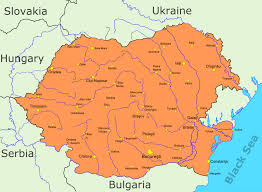Romania vs Moldova: Cultural and Political Ties

Introduction
The relationship between Romania and Moldova has long been a subject of historical significance and contemporary relevance. Situated adjacent to one another in Eastern Europe, these two nations share deep cultural, linguistic, and historical connections. Understanding the dynamics between Romania and Moldova is crucial for grasping the broader geopolitical landscape in the region, especially as both countries navigate their paths toward European integration and independence.
Historical Context
Romania and Moldova’s intertwined history dates back to the times of the Principality of Moldavia, which was part of modern Romania before the 19th century. After the Russo-Turkish War, Moldova was divided, with part of it becoming part of Romania while the eastern half eventually became associated with Russia and Ukraine. This split laid the groundwork for various cultural and political influences that could be observed in Moldova, which has remained historically linked to Romania through language and customs.
Current Events
Today’s context reveals a complex situation. Following Moldova’s independence from the Soviet Union in 1991, there has been a recurring discussion regarding its political alignment—whether to align with the European Union or remain under Russian influence. Recently, Moldova’s government has sought closer ties to the EU, which has been met with support from Romania, advocating for more European integration. In a notable meeting in 2023, Romanian President Klaus Iohannis and Moldovan President Maia Sandu discussed potential avenues for increased cooperation, focusing on energy security and economic development.
Challenges and Cooperation
Despite these cooperative efforts, Moldova faces ongoing challenges, including economic instability and political unrest. The recent rise in energy prices due to regional conflicts has strained Moldova’s resources, leading to widespread protests. Romania has played a supportive role by providing financial aid and energy resources, illustrating the cooperative spirit in addressing mutual challenges. Moreover, there are ongoing discussions regarding cultural exchanges and education programs that foster a deeper understanding and relationship between the nations.
Conclusion
The dynamics between Romania and Moldova underscore the importance of historical context and current political realities. As Moldova continues to navigate its identity and future, the support and relationship with Romania will be pivotal in shaping its trajectory. Moving forward, the continued emphasis on collaboration in addressing economic struggles and political reforms will not only benefit both nations but also contribute to the stability and integration of Eastern Europe as a whole. Observers expect that as Moldova reaffirms its European aspirations, the closeness with Romania will likely deepen, impacting regional dynamics significantly.


